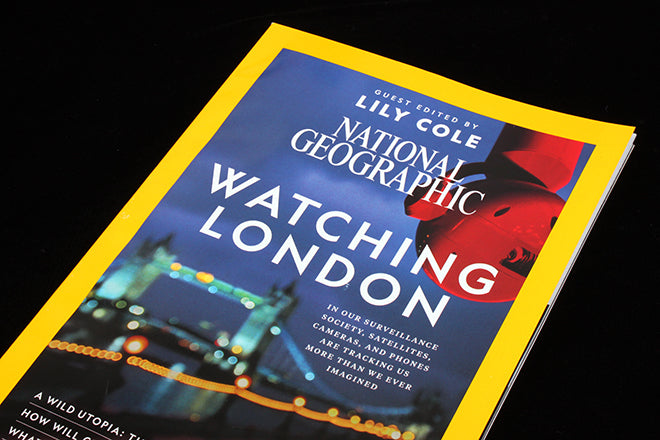
National Geographic, February 2018
The latest edition of National Geographic magazine explores the increasing ubiquity of surveillance in contemporary society, what makes birds intelligent, and the wild utopia of The Falklands. So far, to form. There is, however, a twist.
The issue is guest-edited by model, entrepreneur and environmental activist Lily Cole. Cole is the second of 12 British guest editors who have been invited to put their stamp on the magazine in 2018. She joins the likes of Mo Farah, Brian Cox and Ranulph Fiennes in celebrating the 130th years that the magazine has been in print.
Cole is both a worthy and topical choice. Just last month, in January 2018, a petty yet well-publicised row erupted when she was made a patron of the Brontë Society. Writer and society member Nick Holland snubbed Cole’s appointment on account of her supermodel credentials which was met by Cole asking that her work be “judged on its own merits.” Thankfully Holland’s comments were widely denounced as snobbery.
The merits of Cole’s work make her a good fit for National Geographic. In recent years she has weaned herself away from the bubble of fashion, and today tends to use her public profile to raise awareness for social and environmental causes. The demands of National Geographic’s guest editorship, however, is not entirely clear. Beyond a three-question interview and a brief guest editor’s letter, Cole’s influence on the issue is uncertain. This seems a missed opportunity.
The issue’s lead article is an in-depth discussion of public surveillance in society (above). A massive 25 pages are dedicated to the feature, ample room to weigh up the complexity and delicacy of the divisive, moot subject. Strong visual research backs up the text, with strong infographics and real examples of CCTV imagery from London’s streets bringing often abstract inforamtion to life.
Other stand-out pieces include a Q&A in which New York’s former city mayor, Michael Bloomberg, discusses sustainable urban living; and an examination of how China’s rapidly changing eating habits are reshaping agricultural systems.
While some long-running publications rely too heavily on heritage and reputation, and too lightly on innovation, National Geographic proves itself as a magazine with vision and history.







